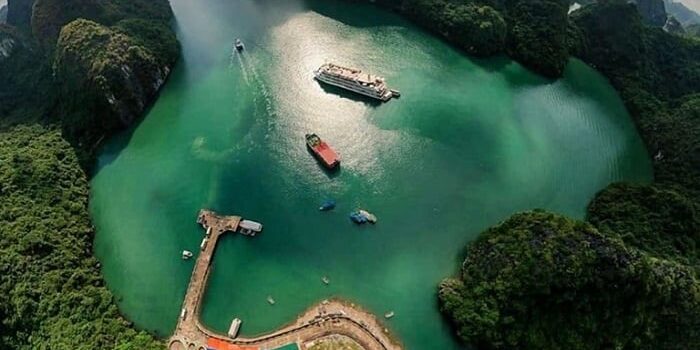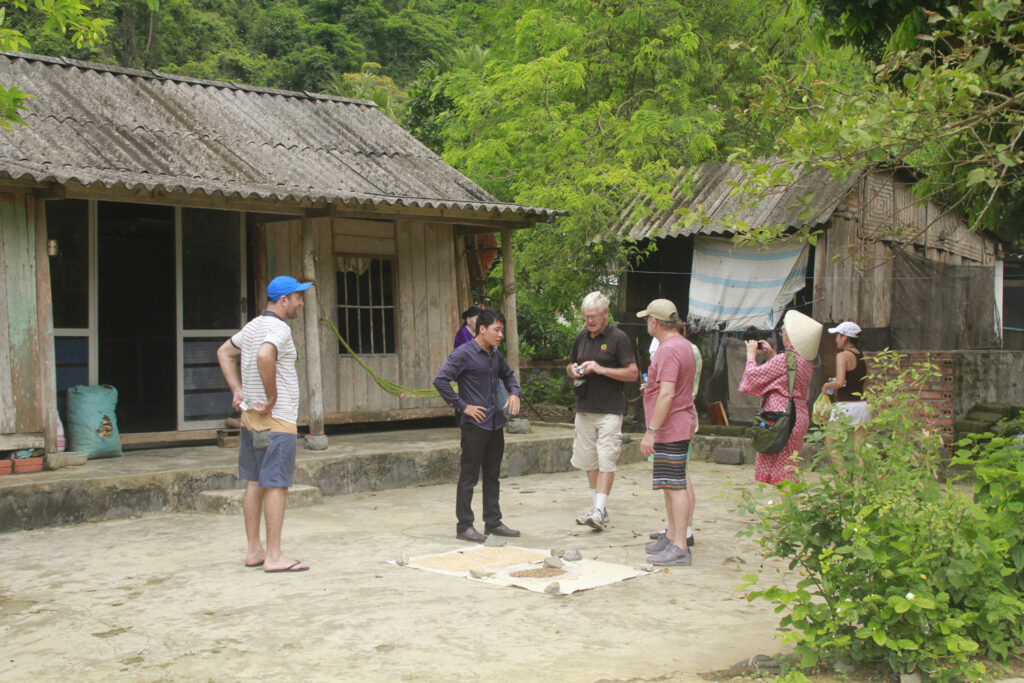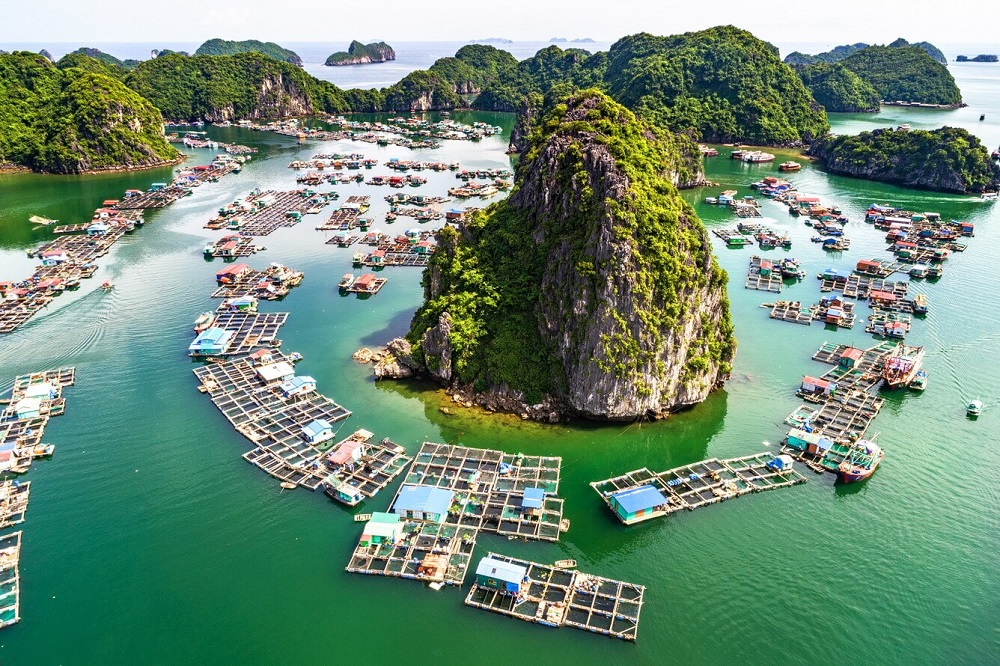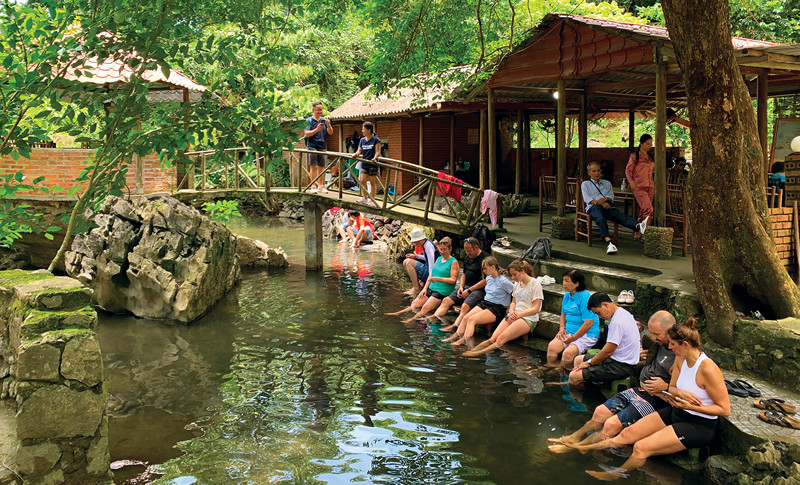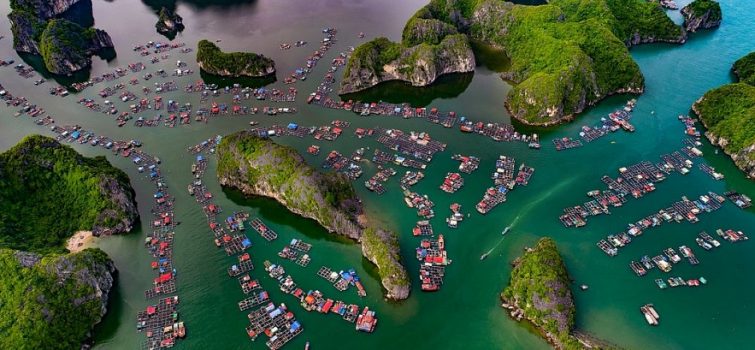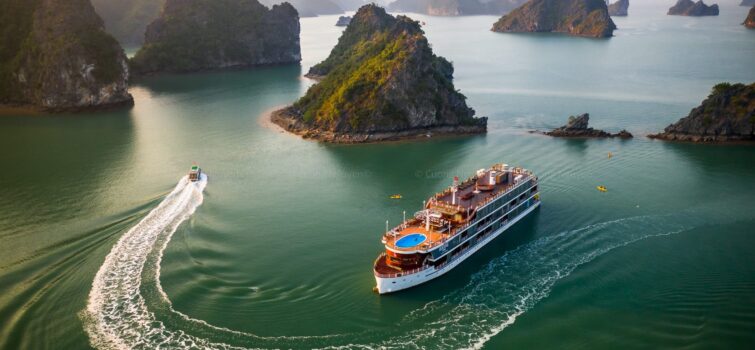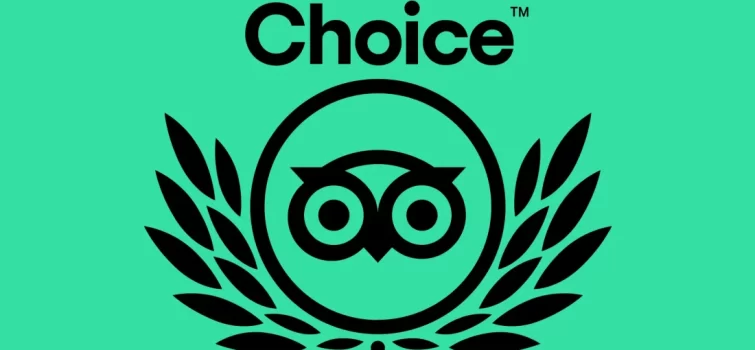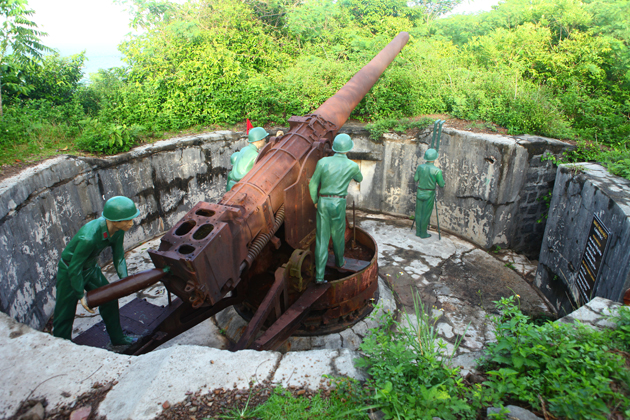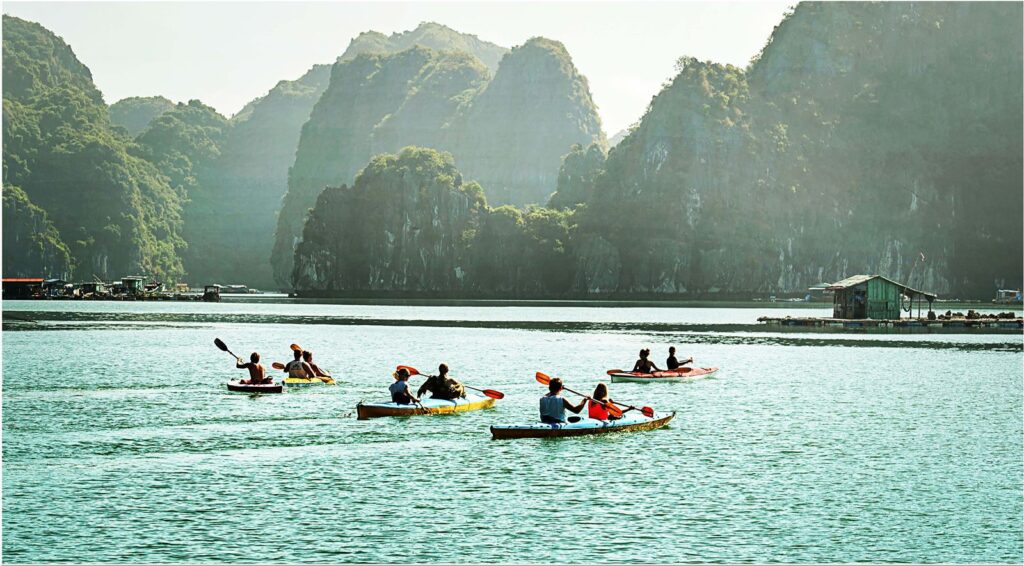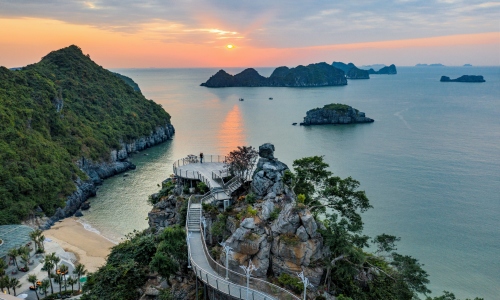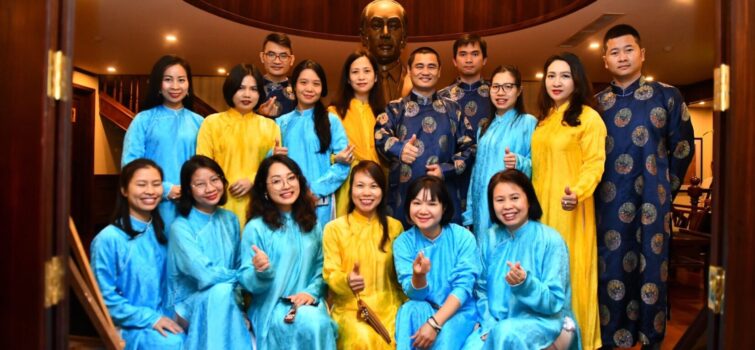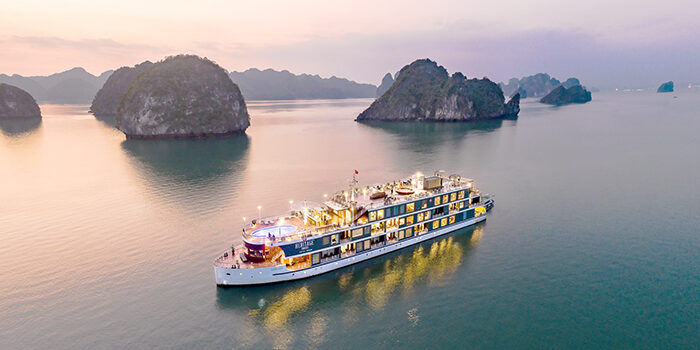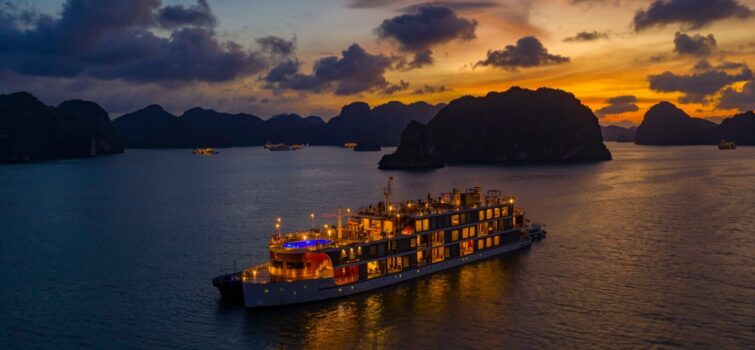Discovering Viet Hai: A Journey Through Time and Nature
Viet Hai, a remote village nestled in the heart of Northern Vietnam’s spectacular karst landscape, offers a compelling story of transformation and the enduring spirit of its people. As a long-time friend and business partner of Quyen, a local entrepreneur, I’ve witnessed firsthand the village’s evolution from a quiet agricultural community to a bustling hub of eco-tourism.
Quyen, whose life changed with the advent of tourism, runs a restaurant and bike rental service that caters to both the locals and visitors. This shift from traditional rice cultivation to tourism has brought new opportunities to the 80 households of Viet Hai, intertwining their destinies with the rhythms of the sea and the whispers of the mountain.
Embracing Slow Tourism
Instead of the usual quick visits, I chose to immerse myself fully in the rhythms of Viet Hai by staying at Lan Homestay. Located near Quyen’s restaurant, this rustic but comfortable accommodation is surrounded by a lush garden, offering a serene retreat from the bustle of daily life. This decision to experience slow tourism allowed me to connect more deeply with the village and its surroundings.
A Trek to Remember
One morning, filled with anticipation, Quyen and I embarked on a challenging trek to the Cat Ba National Park headquarters and onward to explore the historic Tien Duc Cave. It had been nearly a decade since Quyen last took this path, and he was eager to revisit it with me. Starting at 8 AM, equipped with sturdy shoes, insect repellent, and snacks, we began our 9 km journey across the park’s longest trail.
The trek was both a physical and sensory experience. We paid 80,000 VND for our entrance, a small price for access to one of Vietnam’s largest parks. As we walked, we absorbed the sights and sounds of the rainforest—each step a deeper dive into a world where nature dictates the pace and humans are mere guests.
Lessons from the Past
At Tien Duc Cave, Quyen shared stories of the villagers’ lives during the turbulent years of the Vietnam War. The cave, which once served as a shelter for the entire community, still bore marks of its past, with kitchen areas, tables, and beds etched into its walls. This visit wasn’t just a physical journey but a passage through time, connecting us to the resilience of those who once called this cave their temporary home.
The Karst Museum of Earth
The trek also offered breathtaking views of the surrounding karst formations. These natural sculptures, shaped by millennia of erosion, stand as silent witnesses to the immense geological and historical processes that have shaped this land. The jagged peaks and lush valleys told stories of ancient seas and the relentless force of nature carving out a landscape of awe-inspiring beauty.
Encounters and Reflections
Our return journey was marked by encounters with fellow trekkers, including a French couple exploring Vietnam’s rich natural heritage. These brief exchanges, filled with stories and laughter, underscored the universal appeal of Viet Hai and its ability to connect people from all walks of life.
As we concluded our trek and made our way back to civilization, the experiences of the day lingered in my mind. Viet Hai, with its compelling blend of history, culture, and natural beauty, offers more than just a getaway. It is a testament to the enduring human spirit and the transformative power of nature, inviting all who visit to not just see but feel, learn, and grow.
This journey through Viet Hai was more than just a visit; it was a profound engagement with a place that continues to evolve while respecting and preserving its past. It is a reminder that in the quietest corners of the world, we can find the most resonant stories waiting to be discovered.
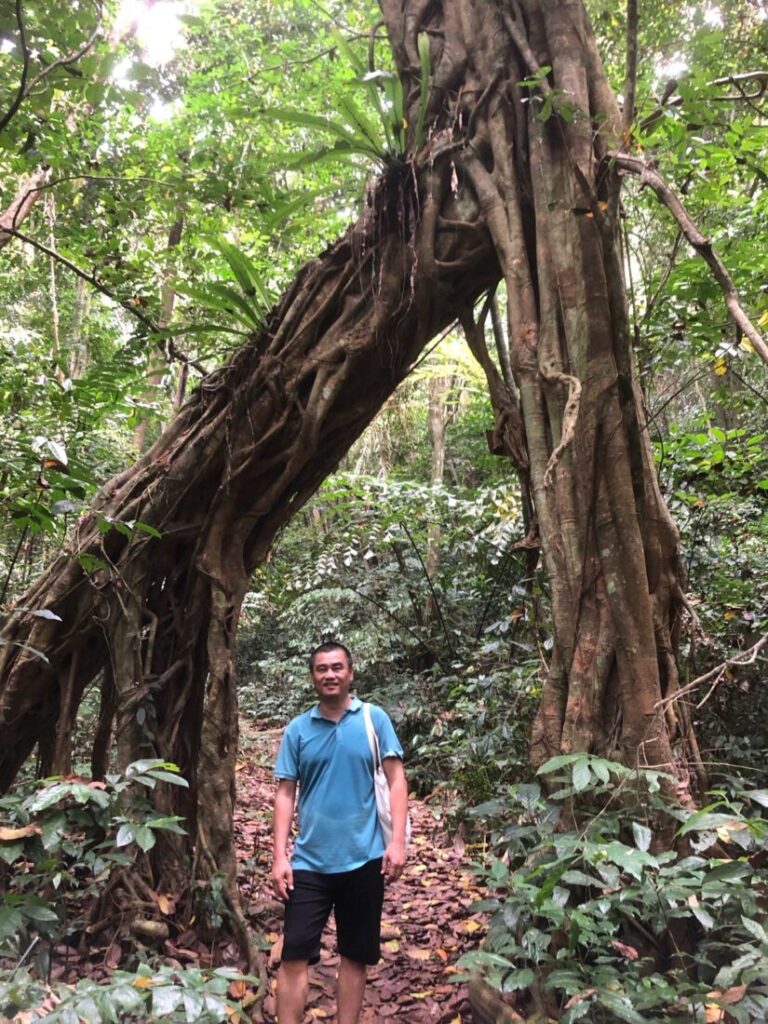
Dr. Pham Ha is the Chairman and CEO of LuxGroup (https://www.luxgroup.vn), a conglomerate of prestigious companies and a leading expert in the luxury tourism industry. Besides his business activities, he is also passionate about collecting paintings, antiques, writing about branding, economics, business management, and books on cultural heritage, history, and art.
Viet Hai Ancient Village – The Essence of Old Vietnamese Villages
Viet Hai Ancient Village – The Essence of Old Vietnamese Villages
Nestled within the scenic landscapes of Hai Phong province, the serene Viet Hai village in Cat Ba presents a picturesque setting characterized by limestone mountains, pristine seas, verdant forests, and rich biodiversity. This underexplored gem promises a unique blend of tranquility and adventure, making it an unmissable part of any Hai Phong journey.
Viet Hai Village, with its allure of simplicity and remoteness, offers an authentic and peaceful retreat for those looking to escape the typical tourist paths.
1. Introduction to Viet Hai Village, Cat Ba
Viet Hai, a quaint fishing village, has become a must-visit destination in Hai Phong, admired for its natural beauty and tranquility.
1.1. Location of Viet Hai – An Ancient Village
Situated deep within Cat Ba National Park, Viet Hai stands out as an “island within an island,” featuring a rich ecosystem amidst its modest 141 hectares, inhabited by 70 households.
1.2. The Rich History of Viet Hai Village
With over a century of history, Viet Hai’s origins trace back to fishermen seeking refuge here. Over time, it evolved into the charming village known today, rich in culture and history.
2. Optimal Time to Visit Viet Hai Cat Ba Village
The village showcases seasonal charms, with February to April and June to August being particularly enchanting for their unique atmospheric beauty and ripe rice fields.
3. Navigating to Viet Hai Village
Reachable by sea or through an adventurous trek through Cat Ba National Park, Viet Hai is accessible yet retains its secluded appeal. Various transport options ensure a journey that’s as engaging as the destination itself.
4. Local Transportation Options in Viet Hai Cat Ba Village
Bicycles and electric bikes offer eco-friendly ways to explore the village’s breathtaking surroundings, catering to all preferences.
5. Engaging Activities in Viet Hai Cat Ba Village
From relishing the tranquil landscapes to immersive experiences like farming with locals and exploring historical sites, Viet Hai offers a plethora of activities for an unforgettable stay.
6. Gastronomy and Accommodations in Viet Hai Cat Ba Village
The village doesn’t just enchant with its views but also tantalizes the taste buds with local seafood delights. Accommodations ranging from homestays to bungalows promise a comfortable and authentic stay.
7. Experiencing Viet Hai Village with Lux Cruises Group
Lux Cruises Group introduces guests to the splendors of Lan Ha Bay and Viet Hai Village through luxurious yacht and cruise tours, blending exploration with elegance.
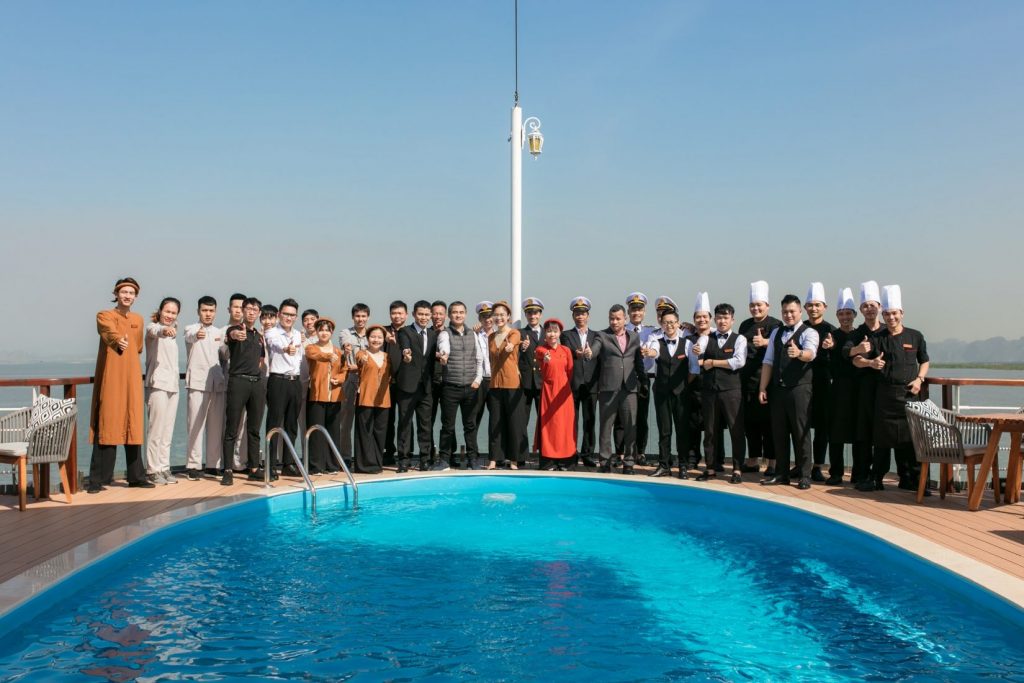
About Lux Cruises Group
Lux Cruises Group, Vietnam’s first boutique cruise line, established in 2014, has become a pioneer in luxury cruising and innovation. With an impressive fleet of 6 yachts, cruises, tenders, and speedboats, Lux Cruises Group (www.lux-cruises.com) operates under two distinct brands: Emperor Cruises, embodying a royal concept, and Heritage Cruises, embracing a boutique approach. Sailing through Vietnam’s most stunning rivers, bays, and archipelagos, including Halong Bay, Bai Tu Long Bay, Lan Ha Bay (Cat Ba Archipelago), Nha Trang Bay, and soon, the Saigon River and Phu Quoc Archipelago.
Heritage travelers will delve into exploration, learning, respect, celebration, and enjoyment of natural and cultural heritage. Lux Cruises Group invites guests to unforgettable overnight journeys through Halong Bay and Lan Ha Bay aboard its luxurious boutique vessels, Emperor Cruises and Heritage Cruises. Paying tribute to the illustrious legacy of the King of Ships, Bach Thai Buoi, Heritage Cruises Binh Chuan Cat Ba Archipelago commemorates the centennial anniversary of its launch in Hai Phong, offering an intimate and refined cruise experience. Immerse yourself in Vietnam’s vibrant culture, storied history, captivating art, and breathtaking natural wonders aboard Heritage Cruises’ vessel, boasting 20 en suite cabins accommodating 40 to 60 passengers.
Meanwhile, Emperor Cruises Origin Nha Trang offers discovery day cruises and sunset immersive experiences with live music and dinner, all included, for 50 passengers on each cruising itinerary in Nha Trang Bay. Emperor Cruises Legacy Halong features 10 en suite cabins tailored to accommodate 30 overnight guests. Drawing inspiration from the opulence of the Last Emperor Bao Dai of the Nguyen Dynasty, guests are treated like royalty, with an ambiance, royal customs, fashion, architecture, and cuisine fit for an emperor. Lux Cruises Group presents a diverse range of cruise durations, spanning from 1 to 3 nights, alongside charter options for extended 6-night expeditions in the Gulf of Tonkin.
Cat Ba Archipelago: Vietnam’s Hidden Gem in the Gulf of Tonkin now UNESCO World Heritage Listed Site
Cat Ba Archipelago: Vietnam’s Hidden Gem in the Gulf of Tonkin now UNESCO World Heritage Listed Site
An enchanting destination boasting pristine beaches, secluded lagoons, coves, tropical forests, and lakes invites you to explore the ideal spots for kayaking, biking, and secluded getaways.
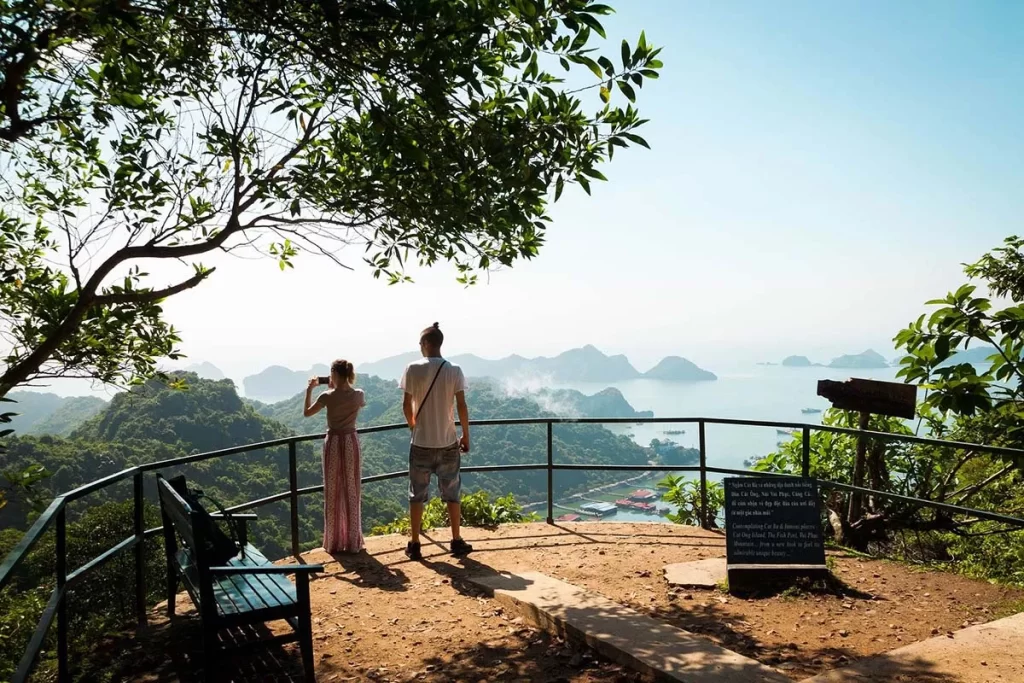
CANNON FORT
Depart from Cat Ba Town towards the well-marked entrance of Cannon Fort, just 15 minutes away. Enjoy a leisurely 20-minute stroll to the fort, where narrow passageways lead to underground tunnels and rooms once utilized for storage or as sleeping quarters.
The fort still showcases gun emplacements and massive guns, offering incredible views across the island and sea. One side reveals green-clad limestone karsts stretching into the distance, while the other side features colorful fishing boats, beaches, and the town itself.
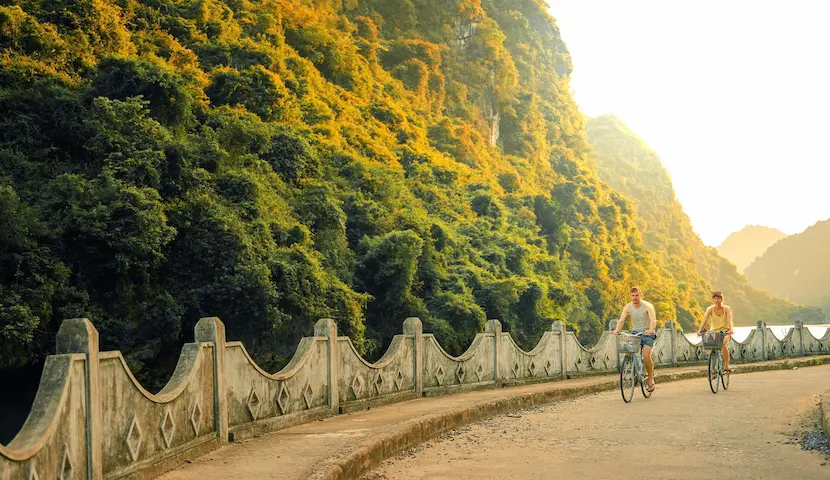
VIET HAI VILLAGE
No trip to Cat Ba is complete without a visit, or even an overnight stay, in Viet Hai village. Nestled in a valley with towering mountains as a backdrop, Viet Hai remains a peaceful enclave despite the island’s growing popularity.
Locals reside in thatched huts and primarily sustain themselves through fishing and farming, with only a handful catering to tourists. Access Viet Hai via a guided trek or cycle ride, passing by Ech (Frog) Lake, the island’s largest lake, or opt for a one-hour boat trip from Cat Ba Town followed by a 45-minute walk (or a short ride by electric car) to the village.
Verdant green paddies line the valley floor, where locals can be seen carrying water and produce on shoulder poles. Experience home-stays or stay in a modest bungalow resort, where the soothing chorus of frogs fills the night air with tranquility.

CAT BA NATIONAL PARK
Established in 1986, Cat Ba National Park sprawls across 9800 hectares of forest and 5400 hectares of marine habitat. Its distinctive limestone mountain range boasts an average height of 150 meters above sea level, with the highest peak, Cao Vong, reaching 322 meters.
Adjacent to the mountains lie white sand dunes, freshwater lakes, and mangrove forests. Enjoy pleasant weather year-round, with an average temperature of 23°C and a dry season from November to April. The park harbors Vietnam’s largest primeval tropical forest, housing hundreds of plant species, including various rare trees requiring protection.
Additionally, the park shelters endangered mammals such as the golden-headed langur, whose population has dwindled due to intense hunting. Cat Ba island lies along a major migration route for waterfowl, attracting around 70 bird species, including hawks, hornbills, and cuckoos.
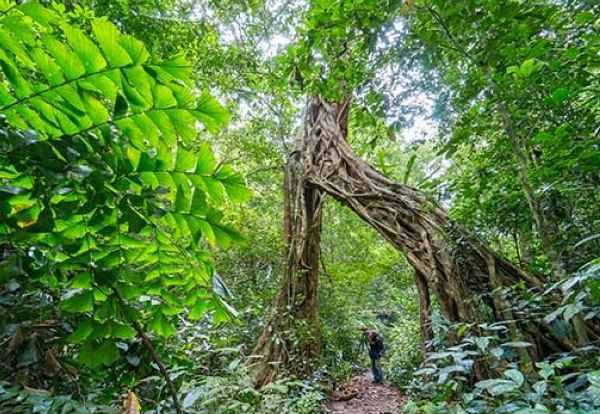
Flora
Tropical moist evergreen forest dominates the park, hosting over 745 flora species from 123 families, including approximately 300 medicinal plant species. Visitors marvel at the rich floral biodiversity, which includes endangered plants, ancient trees, moss, lichen, and creepers.
The park’s habitats, including fringe coral reefs, mangrove forests, and tropical limestone forests, are deemed regionally significant and face threats from encroachment.
Recognized as a World Biosphere Reserve in 2004, Cat Ba strives to protect these vital habitats.

Fauna
Cat Ba National Park teems with wildlife, boasting over 20 reptile and amphibian species and 32 mammal species, including the golden-headed langur, a unique primate found solely on Cat Ba island. Living in small groups in remote areas of the island, the golden-headed langur symbolizes the park’s ecological importance.
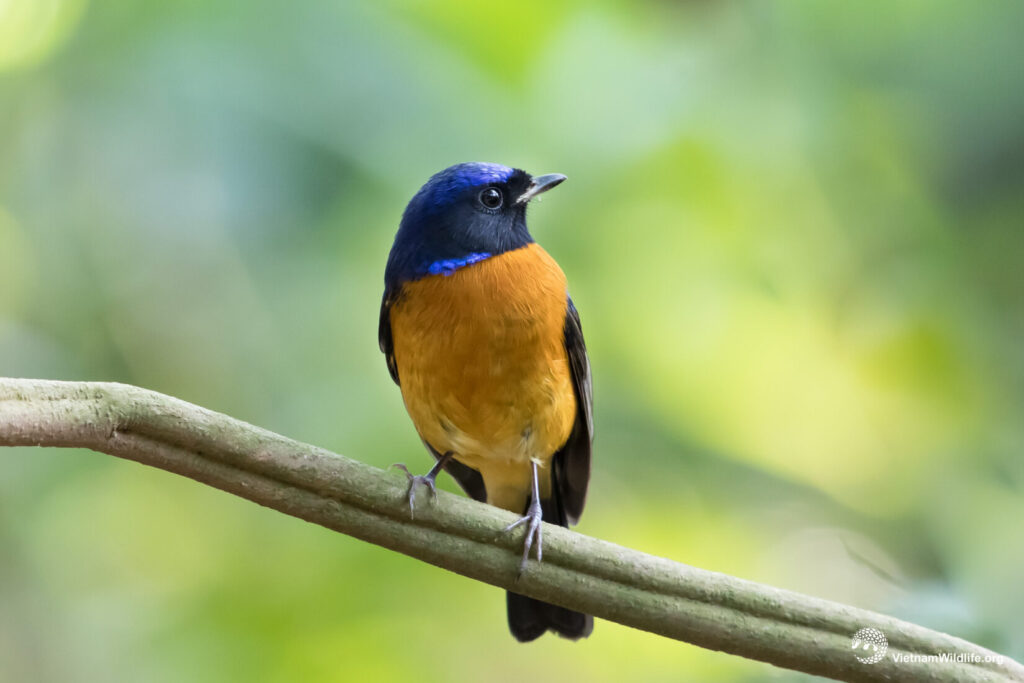
Birds
As a haven for diverse bird species, Cat Ba lies on a major migration route for waterfowl, attracting 70 different bird species. Visitors can easily spot kingfishers, sunbirds, and magpies, while deeper in the forest, the majestic great hornbill and pied hornbill can be observed in pairs or alone during the early morning or late evening.
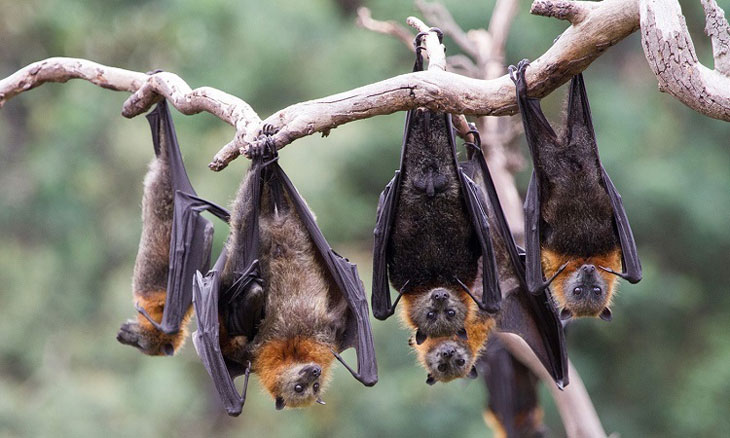
Bats
Various insect-eating bats inhabit the park’s caves, with Trung Trang Cave being the most accessible. Visitors are encouraged to maintain quietude to avoid disturbing the bats’ habitat.

About Lux Cruises Group
Since its inception in 2014, Lux Cruises Group has set a standard in luxury and innovative travel. With an impressive fleet under the Emperor Cruises and Heritage Cruises brands, it explores Vietnam’s most iconic bays and archipelagos. Inspired by the legacy of Bach Thai Buoi, the “King of Ships,” Heritage Cruises offers an intimate voyage through the Gulf of Tonkin, immersing travelers in the rich tapestry of Vietnam’s culture, history, and natural splendor.
The philosophy of “King of Ships” Bach Thai Buoi on the Heritage Binh Chuan
100 years ago, the king of ships Bach Thai Buoi launched the first steamship in 1919 at Cua Cam, Hai Phong. 100 years later, Pham Ha – Founder and CEO of LuxGroup, has designed and built a new Made in Vietnam cruise ship named Heritage Binh Chuan, also located in Hai Phong.
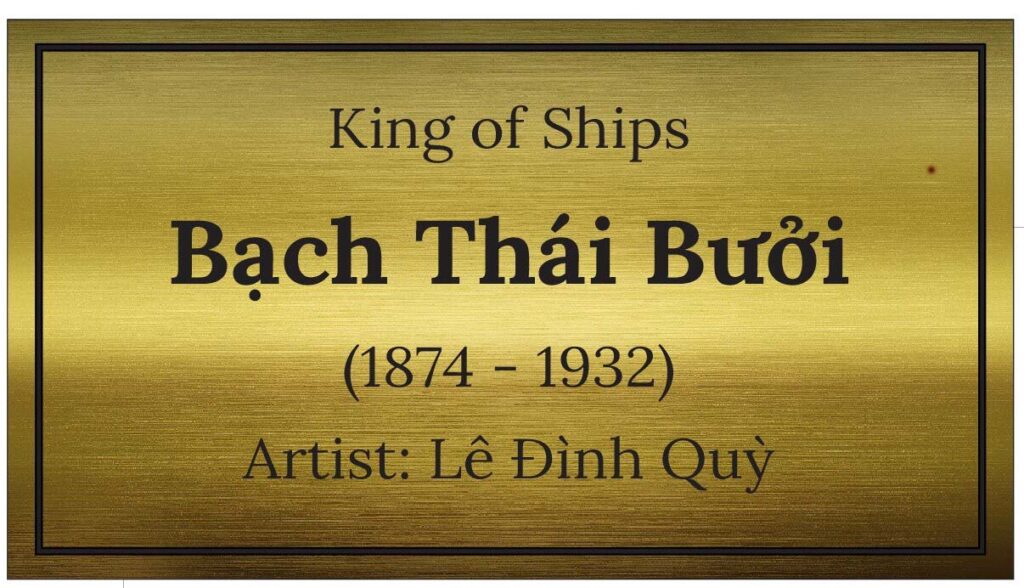
Entrepreneur Bach Thai Buoi came up with the business philosophy of “Vietnamese people use Vietnamese products” and “People travel on our ships.” Following the ideas of the ship king Bach Thai Buoi, CEO Pham Ha has drawn many experiences and valuable lessons from predecessors and applied them in his career in business management, leadership art, delegation of power, and utilizing human resources effectively. The business philosophy of Bach Thai Buoi has been carried on by Pham Ha through initiatives such as “Vietnamese people travel in Vietnam” during the three years of the Covid-19 pandemic.
With permission from the family, Pham Ha cast a bronze statue of the ship king Bach Thai Buoi, placing it prominently on the Heritage Binh Chuan cruise ship (photo provided by Lux Group).
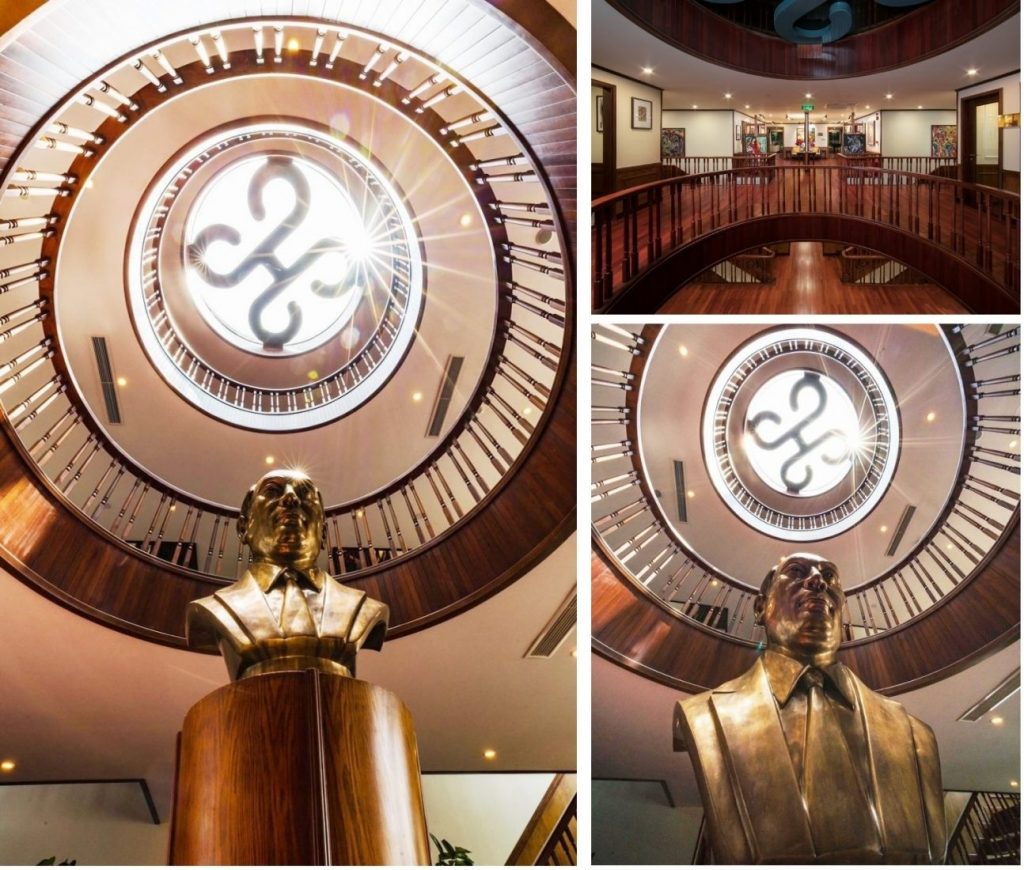
Heritage Binh Chuan carries a mission: “A ship becomes a heritage that transports travellers to seek dreams, imagination, and explore natural heritage,” as historian Duong Trung Quoc once said.
The space on the Heritage Binh Chuan cruise ship is designed to be cozy and filled with historical stories and cultural heritage, from photographs, paintings, architecture to the arrangement of musical instruments… and the cuisine, which includes dishes that reflect the cultural characteristics of the Red River Delta combined with European-style service to elevate Vietnamese cuisine.
All these elements make domestic and international tourists remember the destination and the Binh Chuan cruise ship with its unique and distinct cultural heritage, as remarked by historian Duong Trung Quoc.
Enjoying Vietnamese cuisine and listening to stories about Vietnamese cultural heritage is an attractive experiential product for international tourists (photo provided by Lux Group).
“Vietnam possesses a rich cultural heritage, but currently, we have not transformed culture into products or what is known as the cultural industry, like other countries have done. Take South Korea as an example; they have successfully turned their cultural elements into messages or products that tourists can access and transformed them into the cultural industry, creating values beyond factories and enterprises.”

Pham Ha, Chairman of Lux Group, hopes to continue the maritime business legacy of the ship king Bach Thai Buoi.
“Vietnam, with its 54 ethnic groups and 54 different cultural identities and ways of life, each region has its own cultural values, not to mention the cultural heritage, whether natural heritage, tangible or intangible cultural heritage… that will be attractive and the soft power for us to exploit and incorporate into tourism products,” said Pham Ha, Chairman of LuxGroup, who is concerned about creating Vietnamese cultural values on tourist ships, as well as enriching the nation through the business philosophy that the ship king Bach Thai Buoi successfully implemented.
During interactions with foreign tourists, CEO Pham Ha realized that they are very interested in and curious about cultural tours and experiences, including cultural customs, festivals, traditional costumes, cuisine, architecture, etc. Therefore, he has incorporated cultural elements into his tourism products, integrating them into cruise experiences to ensure that foreign tourists can deeply and delicately experience Vietnamese culture. www.heritagecruises.com
Lux Cruises’s Heritage Cruises Binh Chuan Cat Ba Archipelago to receive TripAdvisor’s Traveller Choice Award 2023 for the second time.
Vietnam’s 5-star boutique cruise, Heritage Bình Chuẩn, has been honored with a TripAdvisor award in 2023. This prestigious recognition comes from the “TripAdvisor 2023 Travelers’ Choice” category, based on thousands of comments and reviews from travelers worldwide.
Inspired by the legendary “king of ships” Bach Thai Buoi, Heritage Bình Chuẩn (www.heritagecruises.com) was launched in 2019 to commemorate the 100th anniversary of the birth of Vietnam’s first ship built by renowned businessman Bach Thai Buoi. The cruise ship was meticulously designed by an art lover, resulting in an interior that exudes a sense of heritage.
Every space on the cruise ship has been utilized to provide guests with an immersive experience of art and the stunning scenery of Lan Ha Bay. Heritage Cruise embraces an Indochinese design style, drawing inspiration from the historic Bình Chuẩn ship. Along the corridors of the yacht, guests can admire photographs showcasing old Vietnam. The ship’s design maximizes natural light through skylights, arched stairs, and windows.
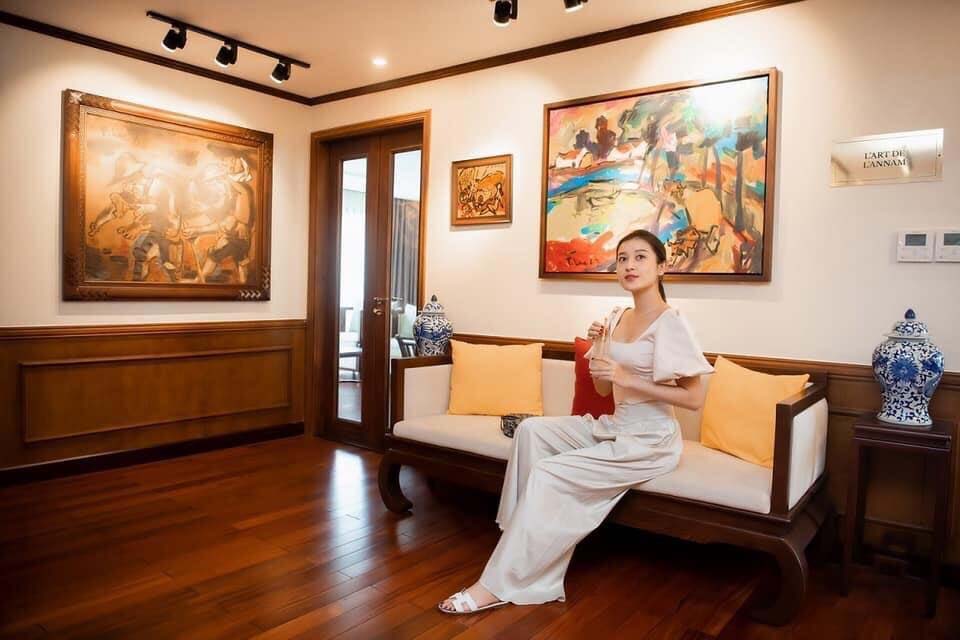
The cruise ship comprises four floors, with three of them housing 20 luxurious rooms of four different types, ranging in size from 33 to 48 square meters. The sundeck, located on the fourth floor, offers passengers the opportunity to recline on deck chairs and marvel at the beauty of the entire bay. The interior of the yacht features long corridors and impressive winding stairs.
At Heritage Bình Chuẩn, guests can enjoy comfort in every area, including restaurants, bars, swimming pools, reading rooms, and rooms with large windows overlooking the sea or rooms with bathing areas near the windows, providing unrestricted views of the lush Lan Ha Bay. During the two-day, one-night cruise, visitors have the chance to explore destinations like Ba Trai Dao and Bright Dark Cave, allowing them to connect with nature. Activities such as snorkeling, kayaking, and swimming are available for guests to enjoy.
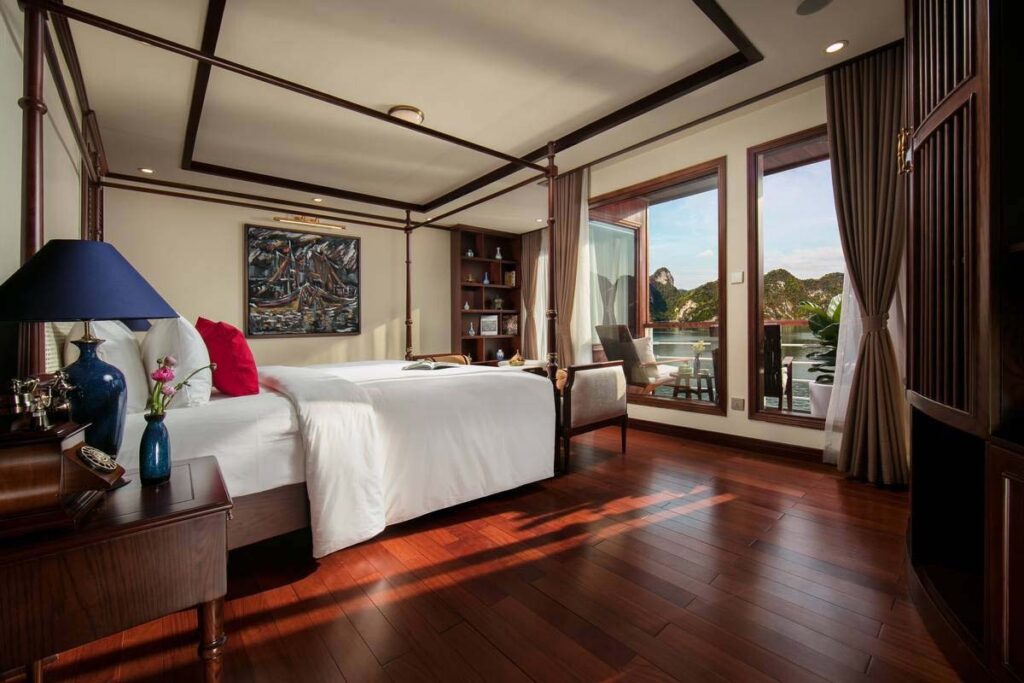
Each room is equipped with two sets of Vietnamese costumes for both men and women, allowing tourists to capture memorable photos and “relive” the ambiance of the ship’s heritage. To enhance the overall experience for travelers, the staff members are dressed in 1930s attire, including four-piece dresses and scarves. The average room rates range from 500 to 700 USD per suite per night for two people. Guests can opt for maxi 3 night cruising experiences in the Gulf of Tonkin.
According to Tripadvisor.com, Traveler’s Choice to experiences and attractions with a high volume of above-and-beyond reviews and opinions from our community over a 12-month period. Each winner has passed our rigorous trust and safety standards. Fewer than 10% of Tripadvisor’s 8 million listings are awarded Traveler’s Choice, signifying the highest level of excellence in travel. www.heritagecruises.com
Cat Ba Archipelago: Vietnam’s Secret Hideaway in the Gulf of Tonkin
An exotic destination with pristine beaches, secluded lagoons, coves, tropical forest, and lakes allows you to discover the best places for kayaking, biking and hideaways.
Cannon Fort
Head out of Cat Ba Town to the entrance of the well-signposted Cannon Fort, just 15 minutes away, and take a leisurely 20-minute stroll to the fort. Take time to investigate the narrow passageways and go into the underground tunnels and rooms which were once used for storage or as sleeping quarters. The gun emplacements and enormous guns are still there, and the views across the island and sea are incredible. In one direction, are the green-clad limestone karsts stretching into the distance while the opposite side is dotted with colorful fishing boats, beaches, and the town itself.
Viet Hai village
No visit to Cat Ba is complete without a short visit, or even an overnight in Viet Hai village, a sleepy place in a valley, with high mountains as a backdrop. Despite the influx of visitors to the island, life has changed little in Viet Hai, where the locals live in thatched huts and mainly earn a living from fishing and farming, with just a few catering to the tourist trade. To reach Viet Hai take a 3-4-hour guided trek or cycle ride passing Ech (Frog) Lake, the island’s largest lake, or an hour’s boat trip from Cat Ba Town and then a 45-minute walk (or short ride by
electric car) to the village itself. Lush green paddies stretch along the valley floor and locals can be seen carrying water and produce on shoulder poles. Home-stays are possible or stay in a small, simple bungalow resort where the sound of frogs is the
only sound to break the silence at night.
CAT BA NATIONAL PARK
Cat Ba National Park was established in 1986, covers 9800ha of forest and 5400ha of marine habitat and is distinctive because of its limestone mountain range with an average height of 150m above sea level. The highest peak is Cao Vong at 322m. Adjacent to the mountains are white sand dunes, freshwater lakes and mangrove forests. The weather is pleasant throughout the year, with an average temperature of 23C and the dry season between November and April. The park is home to the largest primeval tropical forest in Vietnam with some hundreds of species of plants, including various rare trees that need to be protected. It is also home to several endangered mammals including the golden-headed langur. In the past there were thousands of these langurs on Cat Ba, but because of intensive hunting there are believed to be just a few dozen surviving. Other endangered species include the rhesus macaque, black giant squirrel, and civet cats.
Cat Ba island lies on a major migration route for waterfowl that roost in the mangrove forests. Around 70 different species of birds have been spotted here, including hawks, hornbills and cuckoos.
The details Flora
Tropical moist evergreen forest covers most of the park’s area with over 745 flora species belonging to over 123 families, including approximately 300 medical plant species. The richness of floral biodiversity here amazes visitors with its endangered plants, hundred-year-old trees, moss, lichen, and creepers. There are also regionally important habitat types including fringe coral reefs, mangrove forests, sea
grass beds, willow swamp forest and tropical limestone forest. Most of the habitats are under severe threat, especially due to encroachment. Because of these important habitats, Cat Ba was acknowledged as a World Biosphere Reserve in 2004.
Fauna
Wildlife in Cat Ba National Park is plentiful with over 20 reptile and amphibian species and 32 mammal species including the golden-headed langur, which is found on Cat Ba but nowhere else in the world. Golden-headed langur live in small groups of 5-10 individuals in remote parts of theisland.
Birds
Cat Ba is an area of diverse bird species as it lies on a major migration route for waterfowl that roost in the mangrove forests. Around 70 different species have been recorded and visitors can easily spot kingfishers, sunbirds and magpies. Deeper in the forest, great hornbill and pied hornbill, the biggest bird residents in Cat Ba can be seen in pairs or alone, in the early morning or late evening.
Bats
A number of insect-eating bats live in various caves within the park, and Trung Trang Cave is most easy to access. When visiting please keep quiet so as not to scare the bats.
SUGGESTED WALKS IN CAT BA NATIONAL PARK
Headquarters
This is a good starting point for any route within the park as the guides can provide information and play a video about the park before visitors head off into the park. There is also a very informative Environmental Education Center from where maps can be bought.
Nature trails and points of interest
There is a nature trail network linking the headquarters and various points of interest within the park. The nature trails follow signboards or signs on tree trunks or on rocky cliffs and visitors must stay on the main paths and trails. It is recommended that walkers take a map, water and food (for some of the longer trails). Leech protection socks and insect repellent are also advised, especially during the rainy season. Long
trousers and good boots are needed at all times of year. A compass and binoculars are never a bad idea either.
Some suggested walks
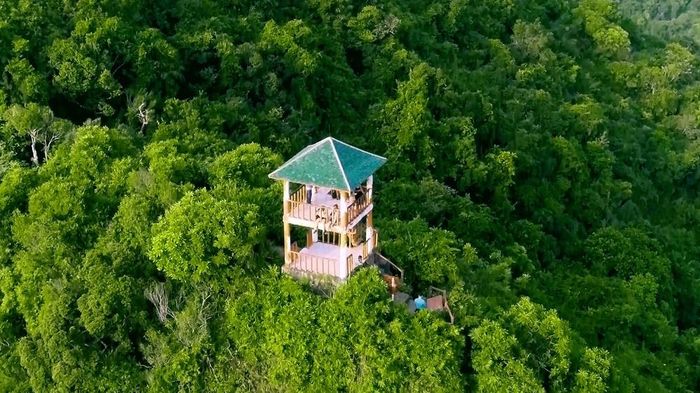
Kim Giao Forest
1. Headquarters to Kim Giao forest.
Start from the park’s main gate, cross the zoo and botanical gardens and from the foot of the mountain go up the rocky steps, to the first intersection, and turn right to Kim Giao (a precious timber tree) forest
Terrain: easy. Distance: 1km. Walking time: 30 minutes.
2. Headquarters to Ngu Lam Peak
Start at the main gate and at the intersection, follow the main path. Cross over the Yen Ngua Peak (where the two mountains meet), turn left and keep walking to the top of the mountain. At an altitude of 210m stop to take in the view of the tropical karst forest and the sea beyond.
Distance: 1.5km. Walking time: 1 hour.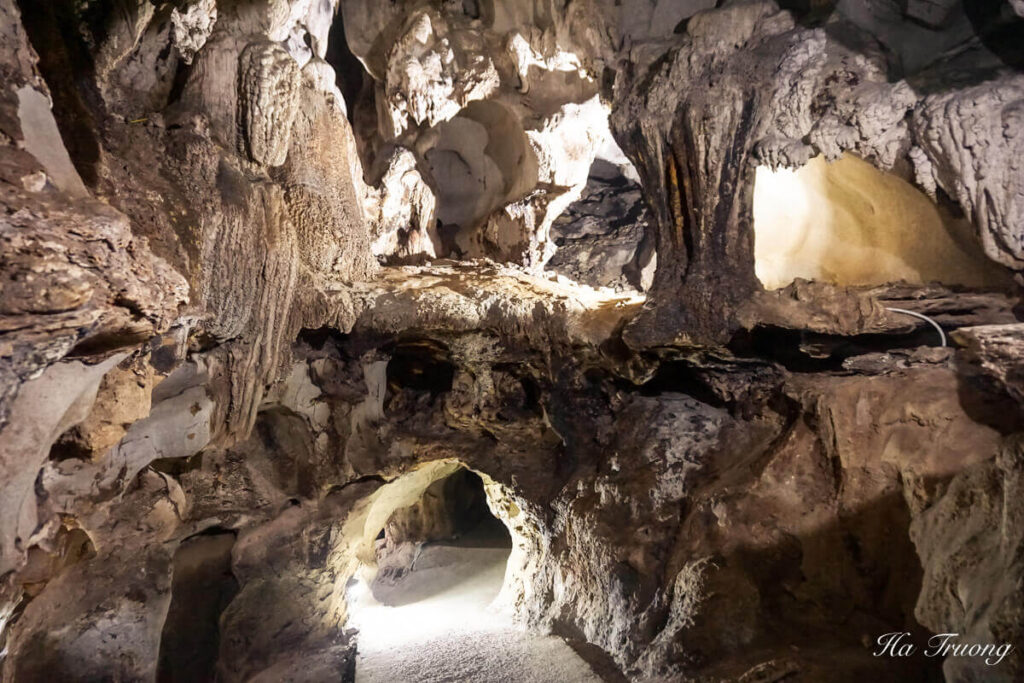
3. Headquarters to Trung Trang Cave
Start from the headquarters, walk around 1km towards Cat Ba town and a signboard for visitors is on the left side of the road. Trung Trang Cave has mysterious stalactites with amazing shapes and styles. Visitors can go through the cave and return to Headquarters. It is advised to take a torch if isiting the cave.
Distance: 3.5km. Walking time: 2 hours.
4. Headquarters to Ao Ech.
Start from behind the Headquarters and take care following the trail as the terrain is relatively hard, with lots of intersections. A newcomer may get lost without an accompanying guide. For the adventurous, this is an interesting route as it crosses hills, dense forest, and grassland.
Distance: 5km. Walking time: 2.5 hours (one way).
5. Headquarters-May Bau-Khe Sau
Start as route 4, pass May Bau Peak and continue down to the grasslands below (3km from the headquarters) and take a right-hand turn. Pass the primary school and through the limestone mountain forests and walk 2.5km along the main trail to Quan Y Cave. A lift in a pickup can be arranged from the cave.
Distance: 5.5 km. Walking time: 3 hours.
6. Headquarters-Ao Ech-Viet Hai fishing village-Lan Ha Bay.
Start as route 4 and from Ao Ech, keep walking along the main path to Viet Hai village (3 hours). A transfer by boat can be arranged to Lan Ha Bay, and from the bay to Cat Ba town (2 hours). This is a circular route, so a boat can be hired either in Cat Ba town or with the park's guides. A lunch break or an overnight at Viet Hai village are suggested for those interested in learning a little more about
local customs and culture.
Terrain: Hard.
7. Marine ecotourism route by boat
Start from either of the two main ports at Cat Ba town. Go through Ang Qua and Ang Vem to Lan Ha Bay, and if possible to Halong Bay. Visitors may stop at pearl cultivation spots and fish farms along the way. Short visits to the beaches at Van Boi, Cai Dua and Ba Trai Dao islands are recommended. Sailing time: 3 hours (by small boat).
Cat Ba Island
Many legends and mythologies surround the island’s name
From my vintage postcards of French Indochina, I treasure a rich collection about local life, people, landscape, townscapes and villages in the early 1930s, as well as some of the many legends and myths which have been handed down the generations. The first is the legend of the name ‘Cat Ba’, which means Island of women in Vietnamese, where, once upon a time the island used to be the realm of women who grew vegetables and supplied food to the men so that they could have the strength to fight off invaders.
Cat Ba island is also characterized by the Kim Giao tree (scientific name Nageia-fleury) whose origin is linked with an ancient legend. These species grow in Cat Ba National Park and the most notable characteristic of these species is that the wood changes color when it comes into contact with any toxic substance. Therefore, in the past, this kind of wood was often used to make chopstick for the king.
The legend surrounds a romantic love story between a talented man, Kim Ngan, and a beautiful princess, Giao Thuy. The man was poisoned by envious and sycophantic courtiers and died. The princess cried so much for her lover that she lay down by his tomb and died with grief. Afterwards, two trees grew from the tomb and local people named the species Kim Giao in their honor. Cat Ba is the largest of the 366 islands, spanning over 260 km 2, that comprise the Cat Ba Archipelago, which makes up the southeastern edge of Halong Bay, and is a new hotspot for cruises, cultural activities, heritage travelers, and holidaymakers.
THE AO DAI IN VIETNAMESE CULTURE
The Ao Dai is the most recognizable traditional dress seen in Vietnam, and though western-style clothes are popular, this beautifully styled outfit is still worn throughout the country during Tet, at work, to weddings, and other national celebrations. Ao Dai mean “Long Dress” and is a two-piece garment. The bottom part consists of loose pants that reach the ankles. The top is a tight-fitting tunic with long sleeves and a high collar with two panels that float loosely down the front and back.
The Ao Dai is famously known to “cover everything, but hide nothing,” and it perfectly accentuates the long, lithe body possessed by Vietnamese women. On board Heritage Cruises, our in-house guests have the opportunity to try on a 1930s-stye Ao Dai, a memorable experience.
The Ao Dai has a long history which evolved over time; it can even be seen as a motif on the drums of the Dong Son, a Red River culture. Since then, both men and women have worn different variations of the Ao Dai. It has never been an official ceremonial dress but has always been used as an everyday outfit.
Now, with western fashions popular in Vietnam, the once “everyday” Ao Dai is now only worn on special occasions and by office staff in companies that require it. It has experienced a revival in recent years, and it’s extremely common now to see women navigating traffic on bicycles and motorbikes, expertly lifting the long panels away from greasy spokes and gears. Men no longer wear the garment as much as women do, confining it to traditional weddings and for photo shoots, popular with Vietnamese all over the country.

The variations in color of this unique national costume is striking: high-school girls wear white, female cabin crew on Vietnam Airlines wear red, and bank employees wear ones matching their company’s logo. It’s also quite common for older women to wear Ao Dais made of a velvety material and accentuated with a rope of pearls. The style of today’s Ao Dai remains close to the original, having changed very little in the last 100 years. However, in the last thirty years subtle changes have been made to the pleating and the length of the collar.
Many Vietnamese designers are now reinterpreting the Ao Dai, experimenting with new materials, decorations, and adornments. Many of their studios can be found in Saigon and Hanoi with prices ranging up to several hundred dollars for one of their creations. For foreign women traveling in Vietnam, Ao Dais make excellent handmade souvenirs. Shopping for material in Saigon’s Ben Thanh market is a good excursion, and you will make friends along the way by asking for suggestions and recommendations for tailors.
Numerous tailors can be found in Saigon, Hoi An and Hanoi that specialize in making excellent Ao Dais. Most of them can make the outfit in 24 hours or less. What better way is there to remember your fantastic trip to Vietnam? You’ll be reminded of this beautiful country every time you put on your Ao Dai.
Heritage Cruises Receives Nomination for World’s Best Boutique Cruise Line 2023
[Hanoi, Vietnam – June 16, 2023] – Heritage Cruises, an extraordinary sailing experience inspired by the legendary Bach Thai Buoi, known as the king of ships, has been honored with a prestigious nomination for the highly coveted title of World’s Best Boutique Cruise Line 2023. This esteemed recognition marks a significant milestone as Heritage Cruises receives its first-ever nomination for this internationally acclaimed award.
Established in 2019, Heritage Cruises was brought to life by Pham Ha, the visionary founder and CEO of Lux Cruises, with the vision of celebrating the revered Bach Thai Buoi and reviving Vietnam’s rich cultural heritage. Pham Ha, along with the entire team and corporate culture at Lux Cruises, takes great pride in this well-deserved nomination.
Featuring 20 lavish cabins that can accommodate up to 60 passengers, Heritage Cruises boasts an exceptional staff-to-guest ratio of 1:1, ensuring personalized and attentive service throughout the voyage. The cruise line specializes in 1 to 3-night expeditions in the Gulf of Tonkin, with a particular focus on the captivating Lan Ha Bay and the enchanting Cat Ba Archipelago.
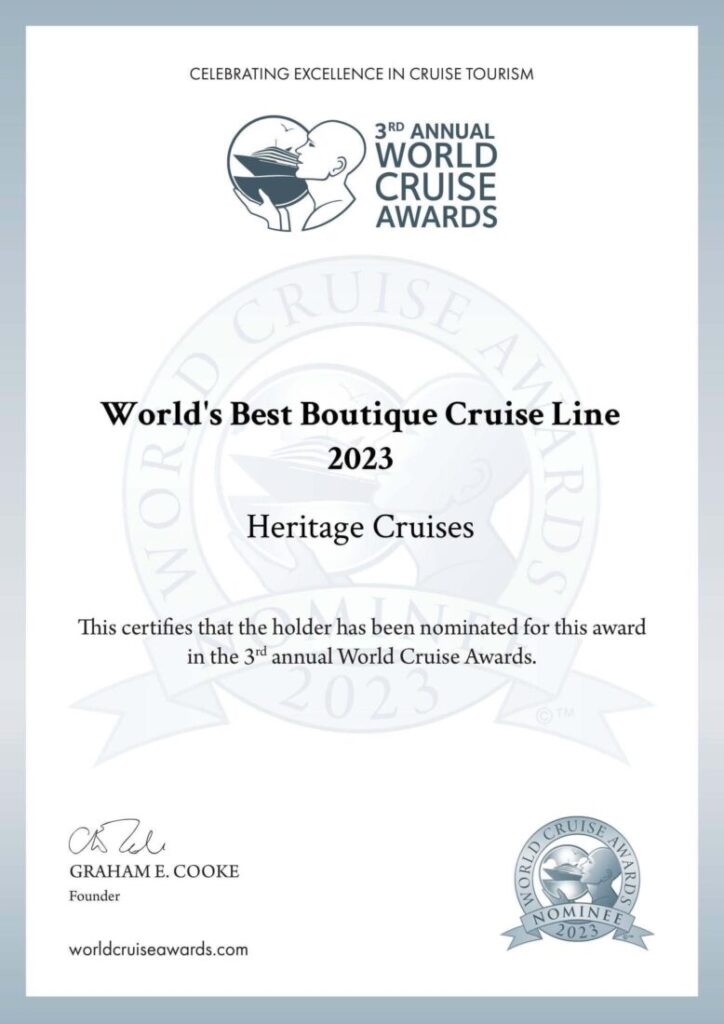
Heritage Cruises has been the recipient of numerous international and national awards, underscoring its commitment to excellence and further solidifying its reputation as a premier boutique cruise line. These accolades are a testament to the company’s unwavering dedication to delivering an extraordinary and immersive cruising experience.
The term “boutique cruise” refers to a type of cruising that offers an intimate and personalized approach compared to larger, mainstream cruise ships. Borrowed from the retail industry, where it typically describes small, stylish, and specialized shops that offer unique and curated products, the concept of boutique cruises centers around exclusivity, attention to detail, and a more intimate ambiance. These cruises often feature smaller ships with a limited number of cabins or suites, providing guests with a tailored and personalized experience. The focus is typically on delivering high-quality service, immersive itineraries, and distinctive amenities.
Boutique cruises offer a range of features, including gourmet dining experiences, luxurious accommodations, personalized service from a dedicated crew, and unique activities or excursions. They often cater to specific interests or themes, such as cultural exploration, adventure, or relaxation, aiming to establish a more intimate and immersive connection to the destinations visited.
Today’s travelers’ never-ending search for something “new and different” inspired the evolution of boutique hotels and cruises. But what exactly is a boutique cruise? While there is no strict definition of a boutique cruise, the genre does tend to have some common features. Here are top ten characteristics of boutique cruises such as Heritage Cruises: Size, Individuality, Design, Character, Culture, Service, Gastronomy, Clientele, Sense of a place, Authenticity.
With voting for the World’s Best Boutique Cruise Line 2023 set to commence from June 14 to September 15, cruise enthusiasts and travelers worldwide have the opportunity to cast their votes. The highly anticipated gala dinner and awards ceremony will take place in Dubai on October 15, 2023, where the winner will be revealed and celebrated.
To support Heritage Cruises and cast your vote, please visit https://worldcruiseawards.com/award/world-best-boutique-cruise-line/2023
Under the visionary leadership of Pham Ha, the company has realized his childhood dream of showcasing the beauty of Vietnam from the North to the South by constructing 30 ships that sail along the Vietnamese coastline. For more information about Heritage Cruises, please visit www.heritagecruises.com.
About Heritage Cruises:
Owned by Lux Cruises, Heritage Cruises is a boutique cruise line in Vietnam that offers a unique and immersive sailing experience. Established in 2019 to honor Bach Thai Buoi, the king of ships, Heritage Cruises brings Vietnam’s rich cultural heritage to life through meticulously crafted voyages. With a strong emphasis on excellence and personalized service, Heritage Cruises has received numerous international and national awards.
Lux Cruises
Step into a world of refined elegance and unmatched luxury with Lux Cruises, proudly presented by Emperor Cruises and Heritage Cruises. As you explore our remarkable fleet of cruise ships, you’ll discover a harmonious blend of timeless beauty, exceptional service, and unforgettable experiences.
At Lux Cruises, we believe that every voyage should be an extraordinary affair, where indulgence and sophistication go hand in hand. Our meticulously designed ships are a testament to this belief, showcasing exquisite craftsmanship, attention to detail, and a commitment to providing the utmost comfort and opulence for our discerning guests.
From the moment you step on board, you’ll be enveloped in an atmosphere of refined sophistication. Our highly trained and dedicated staff members are passionate about curating unforgettable moments for you, ensuring that every aspect of your journey is flawlessly executed. Whether it’s a warm smile as you embark, a personalized greeting from your butler, or the seamless coordination of your itinerary, our team is committed to surpassing your expectations at every turn.
Indulgence knows no bounds aboard Lux Cruises. Our stunning staterooms and suites are designed with your comfort in mind, featuring lavish furnishings, luxurious amenities, and breathtaking views of the surrounding ocean. Unwind in a haven of tranquility, enveloped in sumptuous fabrics and surrounded by elegant touches that elevate your experience to new heights.
Culinary excellence takes center stage on Lux Cruises. Our team of world-class chefs is dedicated to creating gastronomic masterpieces that tantalize your taste buds. From delectable international cuisine to exquisite regional specialties, each dish is crafted with the finest ingredients, showcasing the rich flavors and culinary traditions of the destinations we visit. Indulge in a symphony of flavors, complemented by impeccable service and an extensive selection of fine wines and spirits.
As you sail with Lux Cruises, you’ll have the opportunity to immerse yourself in captivating destinations and captivating experiences. From secluded beach excursions to immersive cultural encounters, our expertly curated itineraries showcase the best of each region, allowing you to connect with the local heritage, natural beauty, and vibrant communities that make each destination unique.
Lux Cruises is more than just a cruise; it’s a gateway to unforgettable memories and transformative experiences. Whether you seek a romantic getaway, a family adventure, or a celebration of life’s special moments, our sales team is here to assist you in creating a personalized journey that exceeds your expectations.
Escape the ordinary and embrace the extraordinary with Lux Cruises. Elevate your travel experience to new heights and embark on a voyage of indulgence, where impeccable service, exquisite accommodations, and awe-inspiring destinations seamlessly blend into an unforgettable journey. It’s time to set sail and create memories that will last a lifetime. Contact our sales team today to embark on your extraordinary adventure with Lux Cruises. Discover more at lux-cruises.com
SPANNING HISTORY
Revered by the people of Hanoi, Long Bien Bridge is living historical evidence of the courage of the capital throughout the ups and downs of the 20th century.
Construction began in 1899 and when completed, in 1902, the bridge was named after Paul Doumer, the French Governor General of Indochina. At that time it was the fourth-longest bridge in the world and the only steel bridge spanning the Red River. In 1954, it was renamed Long Bien Bridge.
At 1,648 metres in length, including 19 spans, its main purpose was a strategically vital one as a direct rail link between Hanoi and the port of Hai Phong.
For many people, Long Bien Bridge is a reminder of French technological innovation at that time. However, it would be an oversight not to mention the more than 3,000 Vietnamese workers who undertook the challenge of building the bridge, using cement from Hai Phong, lime from Hue, and thousands of cubic metres of wood from Thanh Hoa, Phu Tho and Yen Bai provinces.
The bridge has been a major witness of national history and has stood firm throughout two wars against the French and Americans. During the French War (1946-1954), the French used the Hanoi – Hai Phong railway line to evacuate their civilians and troops. It was across the Doumer Bridge that the final contingent of French soldiers walked on the afternoon of 9 October, 1954, after withdrawing from Hanoi Citadel. Vietnamese soldiers then took possession of the bridge, officially renaming it Long Bien Bridge. On the morning of 10 October, 1954, troops entered the city and declared it liberated.
SPANNING HISTORY
Later on, during the American War (1955-1975), the bridge became a key target of US bombers. In March 1965, as the Americans unleashed their sustained aerial bombardment known as ‘Rolling Thunder’, anti-aircraft guns were installed on the central bridge towers. From May to October 1972, President Nixon’s ‘Operation Linebacker’ inflicted further damage on the bridge by hitting it on four occasions, demolishing three more spans and once more severing the vital rail link between the capital and the coast. Altogether, seven spans and four support columns were destroyed during the American War.
After the Paris Peace Accords, work began to rebuild the bridge using steel supplied by the USSR, and by March 1973 trains were once again running from the centre of Hanoi to the Gia Lam junction. But this reconstruction left only half of the bridge with its original shape.
Brighter future
Long Bien Bridge is now over 100 years old and remains an important part of daily life for residents of the capital. The bridge is one of five now crossing the Red River and the only one where traffic moves on the left-hand side. Young teenagers, expats and tourists alike love to walk across it on the weekend, buying boiled glutinous corn or charcoal-grilled sweet potatoes from vendors. The bridge is also the best place in town to watch the sunrise or sunset. Many brides and grooms as well as hip young local people choose Long Bien Bridge as the backdrop for their photos. In the afternoon, people in Ngoc Thuy village and Ngoc Thuy ward pick up fresh vegetables or fish for dinner from the small open-air afternoon market on the bridge.
SPANNING HISTORY
Despite the repairs, however, the bridge is seriously degraded. There have been several proposals put forward recently to modify and modernise the bridge, so that the city can tackle the increasing amount of traffic between the districts of Hoan Kiem and Long Bien.
The first plan was to build a new bridge on the site of the Long Bien Bridge, keeping the central part in place and retaining the railway track but moving other sections of the bridge elsewhere for preservation.
The second option was to construct a new bridge with a similar design and preserve the old one.
The third proposal was to upgrade the bridge while keeping its central part and framework.
The biggest challenge for Hanoian authorities is identifying the best solution to deal with the architecturally-important bridge, a treasured heritage site with cultural and historical significance.
So far, every proposal to change the image of Long Bien Bridge has had its share of supporters and detractors, but one plan has truly sparked controversy. A project to transform the bridge into a cultural and arts space was put forward by Vietnamese-French architect, Nguyen Nga, in a recent interview on RFI (Radio France Internationale).
‘Instead of reminding us of wartime, which resulted in so many losses, the bridge could be a symbol of hope and culture, beautifying Hanoi, the city of peace,’ she said.
Under her plans, the damaged spans of the bridge would be repaired and the whole bridge then converted into a giant Contemporary Arts Museum.
‘A large space would be built on the bridge’s structure to exhibit old steam locomotives and antique carriages would become cafés and restaurants and the bridge covered with transparent glass panels,’ she explained. ‘This would will give the bridge a new appearance while maintaining its structural integrity.’
The central rail track would become a new space dedicated to creative and cultural activities and trees and streetlights would be incorporated to create a romantic walking path.
The highlight of the project would be redesigning the Middle Bank (Bai Giua), an island under the bridge, turning it into an Art Park with gardens and orchards, cycling paths, a skating rink and a climbing wall. One idea is to also have a mulberry plantation and to build a silk weaving village.
Nga has also suggested building a Lotus Tower Contemporary Arts Museum on the right bank of the Red River, where 2.5 ha of land is currently used for light industry.
The tower would be in the shape of a flowering lotus, the national flower of Vietnam, and made from metal and wood. It would house contemporary works of art, as well as new technology from Vietnam and other countries.
Besides housing short-term and permanent exhibitions, the museum would also be a cultural space, with a library, a concert hall, cafés and restaurants and, on the top (ninth) floor, an open space with panoramic views over Hanoi.
‘The project would help improve the living environment of Hanoi residents, gradually changing the urban space around the capital’s green walking routes and adding more green spaces to Hanoi,’ Nga emphasised.
While there is currently no agreement on the future of the project, it is still a positive and bold idea for the development of Hanoi and the country.

